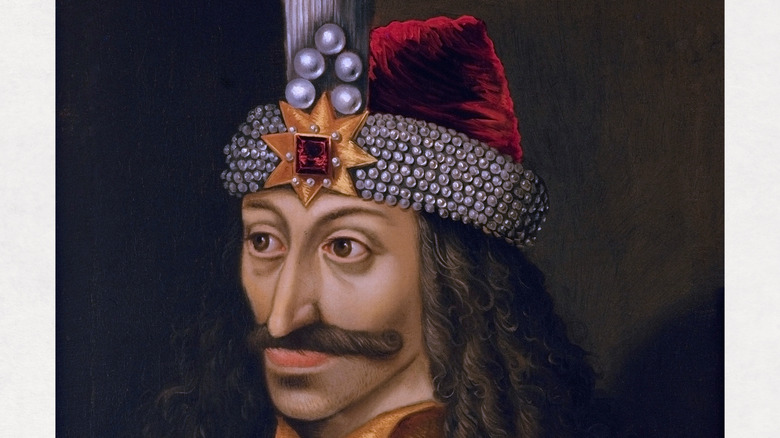Scientists Are Working To Extract Historical DNA From The Real Dracula
Vlad III Dracula, popularly known in history as Vlad The Impaler, is said to be the inspiration behind Bram Stoker's infamous vampire Dracula. Born Vlad Tepes, the Transylvanian came be known for his penchant for impaling opponents as a warning sign to his foes.
Now, A couple of scientists are now trying to extract the DNA of the infamous ruler from letters linked to him. The end goal? To "build up a picture of not only the physical makeup of the Wallachian warlord," and also get an idea of the climate conditions that he lived in (per The Guardian).
It might sound outlandish. How can DNA preserved in saliva or tears that dried hundred of years ago between sheets of paper can help reconstruct the face and physical attributes of a long-deceased person? Surprisingly, it's not impossible for scientists in this day and age. A company named Parabon Nanolabs claims that it can predict the physical attributes of a person using only a sample of their DNA.
New York-based artist Heather Dewey-Hagborg picks up discarded DNA from the roads and claims that it's enough to dtermine "where someone's ancestors likely came from, their gender, eye color, hair color, complexion, freckles, their tendency to be overweight and a handful of dimensions of the face as well with a certain likelihood" she tells CNN. Earlier this year, Israel's Corsight AI also claimed to offer a "DNA to Face" service that can construct an individual's face with just a DNA sample, reports MIT Technology Review.
Reconstructing Dracula, chemically
Dracula appears to be the next on scientist's wishlist. "Protein detectives" Gleb and Svetlana Zilberstein claim to have managed the extraction of biochemical traces from a letter signed by Vlad The Impaler. These biochemical traces include molecules like proteins and metabolites. "These molecules are more stable than DNA and provide more information about the environmental conditions, health, lifestyle, nutrition of the historical person," the duo tells The Guardian.
The couple claims that they also deduced the drug usage and kidney ailment of famous writer Mikhail Bulgakov using biomolecules extracted from manuscript pages. They also did a similar analysis of renowned short story writer Anton Chekov's shirt and found signs of tuberculosis, and got a similar peek into the medical history of science fiction icon George Orwell. The couple has also worked on biochemical analysis of a mammoth's trunk to understand the kind of habitat these wooly elephant ancestors lived in, based on the types of microorganisms inhabiting its body.
The Zilbersteins previously researched the dietary patterns of the Crusaders and their Saracen enemies by collecting biomolecule samples from pottery dating back to their era. In case of the Transylvanian tyrant, the pair analysed a letter that he is said to have written, or signed, in 1475. It will be interesting to see whether the latest research yields a different face for Vlad The Impaler than the one we know from paintings depicting him as a slender man with a thin face and sharp cheek lines.

